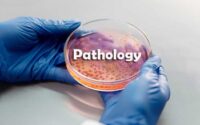Physiology MCQ
Aspirants can find free downloading for Topic wise Physiology MCQ Papers. Applicants can just click on those git physiology Sample Papers and practice them to get a good score. Therefore, you can also visit the official site to get more renal physiology Sample Question Papers.

The applicants who are searching for the sensory physiology MCQs Question Papers reached the right page. Hence, applicants can download the renal physiology Model Papers with Answers pdf from the below free downloading links.
Here are certain direct links are given to download the renal physiology Sample Papers to help the participants who are in preparation for their exams. Hence download the git physiology MCQ Previous Year Question Paper subject wise and practice by solving the questions. Use this previous year question paper of sensory physiology as a reference for your preparation.
MCQ on Physiology
1. Control of axial musculature and postural reflexes is done by which part of cerebellum?
(1) Vestibulocerebellum
(2) Spinocerebellum
(3) Neocerebellum
(4) Archicerebellum
2. Which of the following is a property of electrical synapse?
(1) Mediated by neuro-transmitters
(2) Can occur in both directions
(3) Vulnerable to synaptic fatigue on repetitive stimulation
(4) None of these
3. The autonomic neurons that are cholinergic i.e. release acetylcholine are all EXCEPT:
(1) All preganglionic neurons
(2) All parasympathetic post-ganglionic neurons
(3) Sympathetic post-ganglionic neurons that innervate sweat glands
(4) Sympathetic post-ganglionic fibres
4. Peripheral resistance is mainly due to:
(1) Aorta
(2) Arterioles
(3) Capillaries
(4) Venules
5. Baroreceptor stimulation produces
(1) Decrease in Heart rate and BP
(2) Increase in Heart rate and BP
(3) Increase in Cardiac output
(4) Increase in Cardiac contractility
6. Pulse pressure is:
(1) Systolic — Diastolic
(2) 1/2 Systolic — Diastolic
(3) Systolic — 1/2 Diastolic
(4) Systolic + Diastolic
7. Which of the following is avasoconstrictor?
(1) NO
(2) Prostacyclin
(3) Bradykinin
(4) Endothelin
8. “Redundancy” of the genetic code occurs during which step of protein synthesis?
(1) DNA replication
(2) Transcription
(3) Translation
(4) Post transcriptional modification
9. Cholesterol effects which of the following properties of biological membranes, the most?
(1) Fluidity
(2) Thickness
(3) Hydrophobicity
(4) Ion permeability
10. Micro RNAs (miRNAs)
(1) Formed in cytoplasm, repress translation or promote degradation of mRNA before it is translated.
(2) Formed in nucleus, processed in cytoplasm by dicer enzyme.
(3) Short double stranded (21 — 23 nucleotides) RNA that regulate gene expression.
(4) Repress gene transcription.
11. Messenger RNA (mRNA)
(1) carries genetic codec to cytoplasm
(2) carries activated amino acids to ribosomes
(3) forms ribosomes
(4) is double stranded RNA
12. TRUE regarding both phagocytosis and pinocytosis is:
(1) Occurs spontaneously and non-selectively
(2) Does not require ATP
(3) Observed in neutrophils only
(4) Involves recruitment of actin filaments
13. Following a blood donation, red cell production begins to increase in:
(1) 30 minutes
(2) 24 hours
(3) 2 days
(4) 2 weeks
14. Adhesion of white blood cells to the endothelium is:
(1) Due to decrease in selectins
(2) Dependent on activation of integrins
(3) Due to inhibition of histamine release
(4) More on arterics than on veins
15. Which of the following will be seen in a patient with deficiency of factor XIII?
(1) Prolongation in Prothrombin Time
(2) Prolongation in Clotting Time
(3) Prolongation in Partial Thromboplastin Time
(4) Easily Breakable Clot
16. Which of the following regarding Helper T-cells is TRUE?
(1) They are activated by antigen presentation by infected cell.
(2) They are activated by antigen presentation by macrophages or dendritic cells.
(3) Require presence of competent B-cell system.
(4) Use phagocytosis to destroy bacteria.
17. Which of the following will result in transfusion reaction? (No history of earlier transfusion)
(1) O-ve to AB +ve
(2) A+ve to A +ve
(3) AB+ve to AB +ve
(4) A+ve to O+ve
18. Which of the following is a function of IL-2 (Interleukin-2)?
(1) Proliferation of cytotoxic T-cells
(2) Replication of Helper T-cells
(3) Antigen presentation
(4) Kills virus-infected cells
19. What is the likely cause of excessive bleeding in severe mal-nourishment?
(1) Sequestration of platelets by fatty liver
(2) Serum bilirubin raises neutralizing thrombin
(3) Problem in factor XIII due to low protein
(4) Vitamin K deficiency
20. Excitation-Contraction coupling in skeletal muscle involves all of the following EXCEPT:
(1) Binding of Ca2+ to calmodulin
(2) Hydrolysis of ATP
(3) Depolarization of T-Tubule
(4) Change in dihydropyridine receptor
| Questions and Answers | Quiz |
| MCQs | Practice Set |
| Nursing Exam | HESI A2 |
21. Which of the following increases in tetanic contraction?
(1) K+
(2) ATP
(3) Ca2+
(4) Na+
22. Myelin in peripheral neurons system is formed by:
(1) Oligodendrocytes
(2) Schwann cells
(3) Astrocytes
(4) Microglia
23. Which of the following is true regarding action potential of skeletal muscle?
(1) Spreads to all parts of the muscle via T-tubules
(2) Longer than action potential of cardiac muscle
(3) Not essential for contraction
(4) Has a prolonged plateau phase
24. Which of the following undergoes a decrease in length in skeletal muscle fibre contraction?
(1) I band
(2) A band
(3) Thick filaments
(4) Thin filaments
25. Structurally and functionally Calmodulin is most closely related to:
(1) Myosin light chain
(2) Tropomyosin
(3) Troponin C
(4) G-actin
26. The resting membrane potential of a myelinated nerve fibre is mainly dependent on:
(1) Ca2+
(2) K+
(3) Na+
(4) Cl-
27. The plasma concentration of which of the following substances is likely to rise the most if GFR (Glomerular Filtration Rate) decreases by 50%
(1) Creatinine
(2) Glucose
(3) Phosphate
(4) H+
28. Peri-tubular capillary fluid re-absorption is increased by:
(1) Increased blood pressure
(2) Increased efferent arteriolar resistance
(3) Increased renal blood flow
(4) Decreased filtration fraction
29. What is the osmolarity of tubular fluid flowing through early distal tubule in the region of macula densa?
(1) Hypertonic compared to plasma
(2) Isotonic compared to plasma
(3) Hypotonic compared to plasma
(4) Hypertonic compound to plasma in antidiuresis
30. What is the likely change in a dehydrated person who is deprived of water for 24 hours?
(1) Decreased Antidiuretic hormone
(2) Increased water permeability of collecting duct
(3) Increased Atrial natriuretic peptide
(4) Decreased plasma renin activity
31. In a patient with complete lack of antidiure hormone due to Central Diabetes Insipidus, the lowest turbular fluid osmolarity will be found in:
(1) Proximal tubule
(2) Early distal tubule
(3) Medullary collecting duct
(4) Descending Loop of Henle
32. Which of the following diuretic acts by inhibiting Na+ — 2Cl- — K+ co-transporter in the Loop of Henle?
(1) Furosemide
(2) Thiazide
(3) Carbonic anhydrase inhibitor
(4) Osmotic diuretic
33. Which of the following causes an increase in both Glomerular Filtration Rate and Renal blood flow?
(1) Increased glomerular filtration coefficient
(2) Increased plasma colloid osmotic pressure
(3) Dilation of efferent arterioles
(4) Dilation of afferent arterioles
34. In Hirschsprung disease, obstruction is most likely to be found in
(1) Sigmoid colon
(2) Ileocecal sphincter
(3) Pylorus
(4) Lower esophageal sphincter
35. Which of the following is likely to occur after ileal resection?
(1) Constipation
(2) Vitamin B12 deficiency
(3) Achalasia
(4) Atrophic gastritis
36. Damage to gastric mucosal barrier and stimulation of gastric acid secretion can both be caused by:
(1) Gastrin
(2) Bile salts
(3) Helicobacter pylori
(4) Epidermal growth factor
37. In recording of Lead II of ECG, the positive electrode is placed at:
(1) Left leg
(2) Left arm
(3) Right leg
(4) Right arm
38. In which of the following conditions, a right axis deviation will be seen on ECG
(1) Systemic hypertension
(2) Pulmonary hypertension
(3) Aortic valve stenosis
(4) Aortic valve regurgitation
39. Which of the following heart murmur is heard only in systole?
(1) Mitral stenosis
(2) Tricuspid valve stenosis
(3) Interventricular septal defect
(4) Aortic regurgitation
40. Which of the following is seen in unilateral right heart failure?
(1) Increased right atrial pressure
(2) Increased left atrial pressure
(3) Pulmonary edema
(4) Increased pulmonary artery pressure
41. ‘The highest velocity of blood flow is found in
(1) Capillaries
(2) Aorta
(3) Arteries
(4) Veins
42. The gas that is used to estimate the oxygen diffusing capacity of the lungs is
(1) Carbon monoxide
(2) Carbon dioxide
(3) Nitrogen
(4) Cyanide gas
43. While breathing in and out of a paper bag, the rate of breathing keeps increasing. This occurs due to
(1) Increased alveolar PCO2
(2) Increased alveolar PO2
(3) Decreased arterial PCO2
(4) Increased pH
44. In emphysema, a decrease in which of the following is seen:
(1) Pulmonary artery pressure
(2) Diffusion area
(3) Cardiac output
(4) Alveolar PCO2
45. Calculate the compliance of the lungs given:
Change in Volume = 1000 ml
Intrapleural pressure at beginning of inspiration = —-4 cm of H2O
Intrapleural pressure at end of inspiration = — 12 cm of H2O
(1) 50 mi/cm H2O
(2) 100 mi/cm H2O
(3) 150 ml/cm H2O
(4) 125 ml/cm H2O



